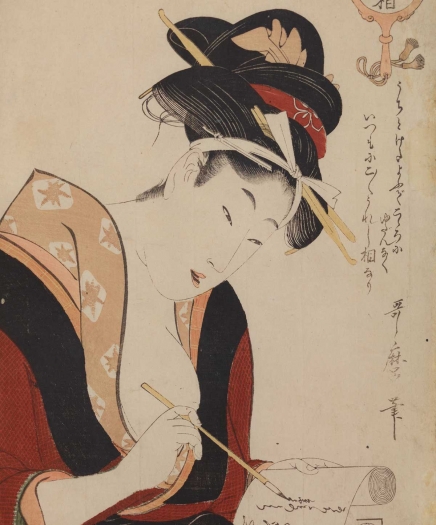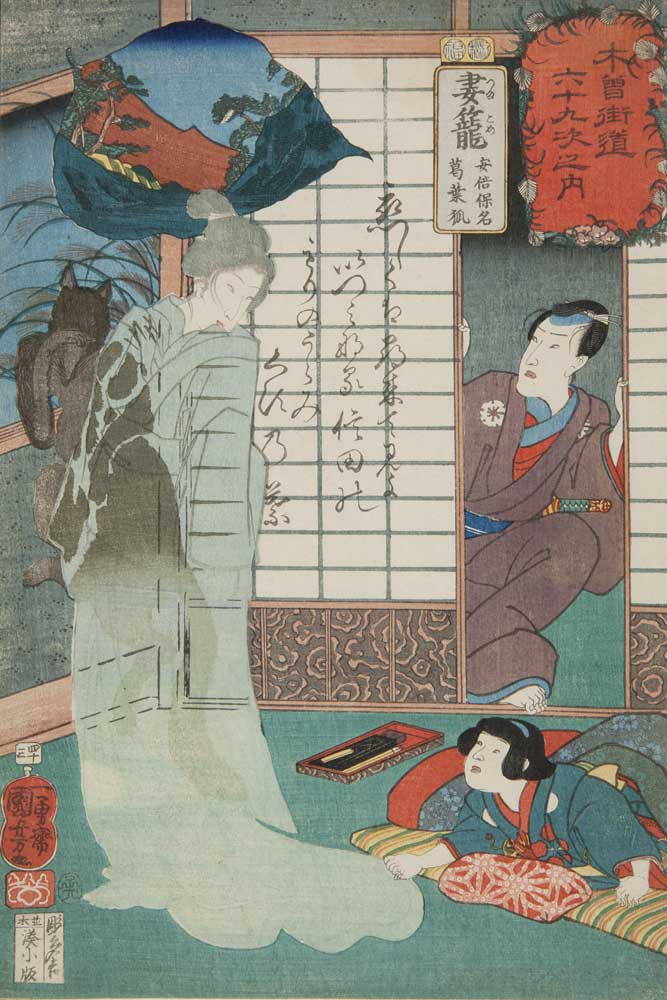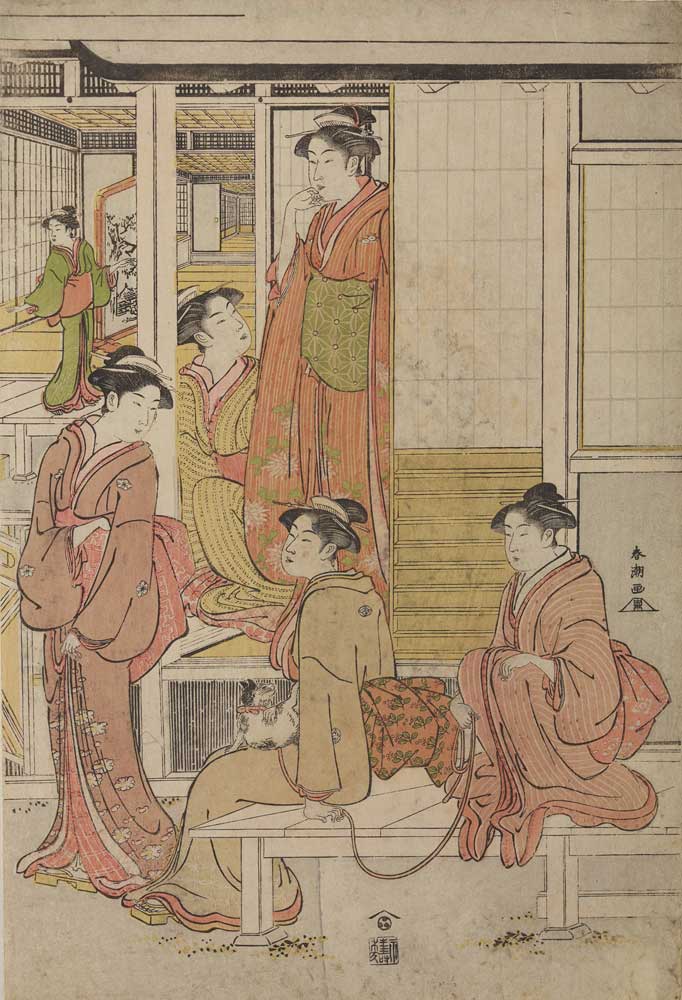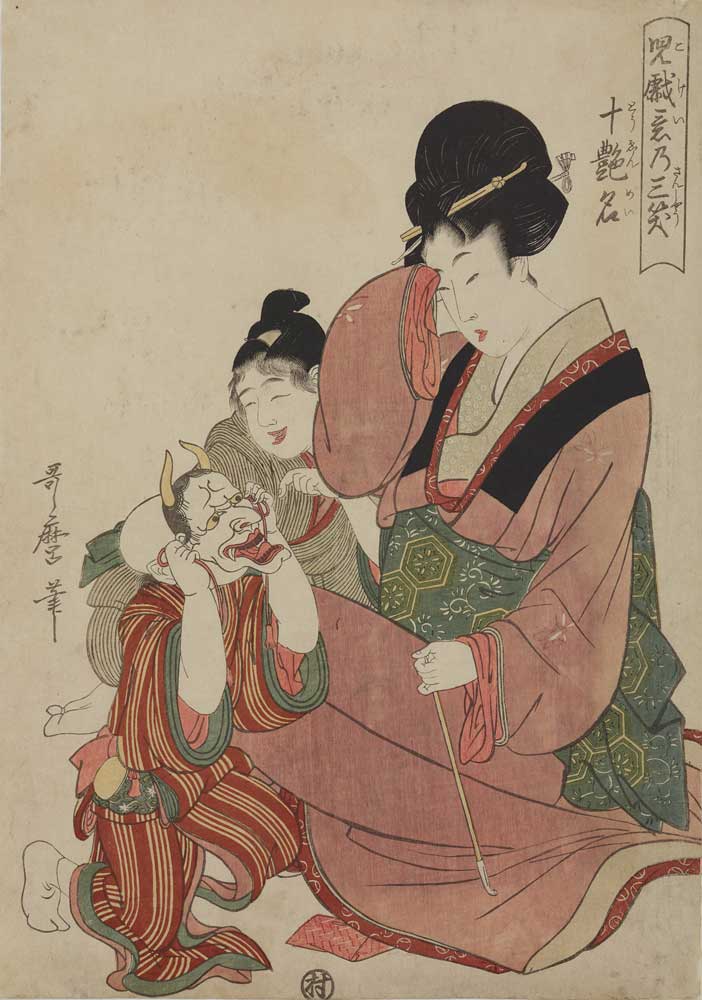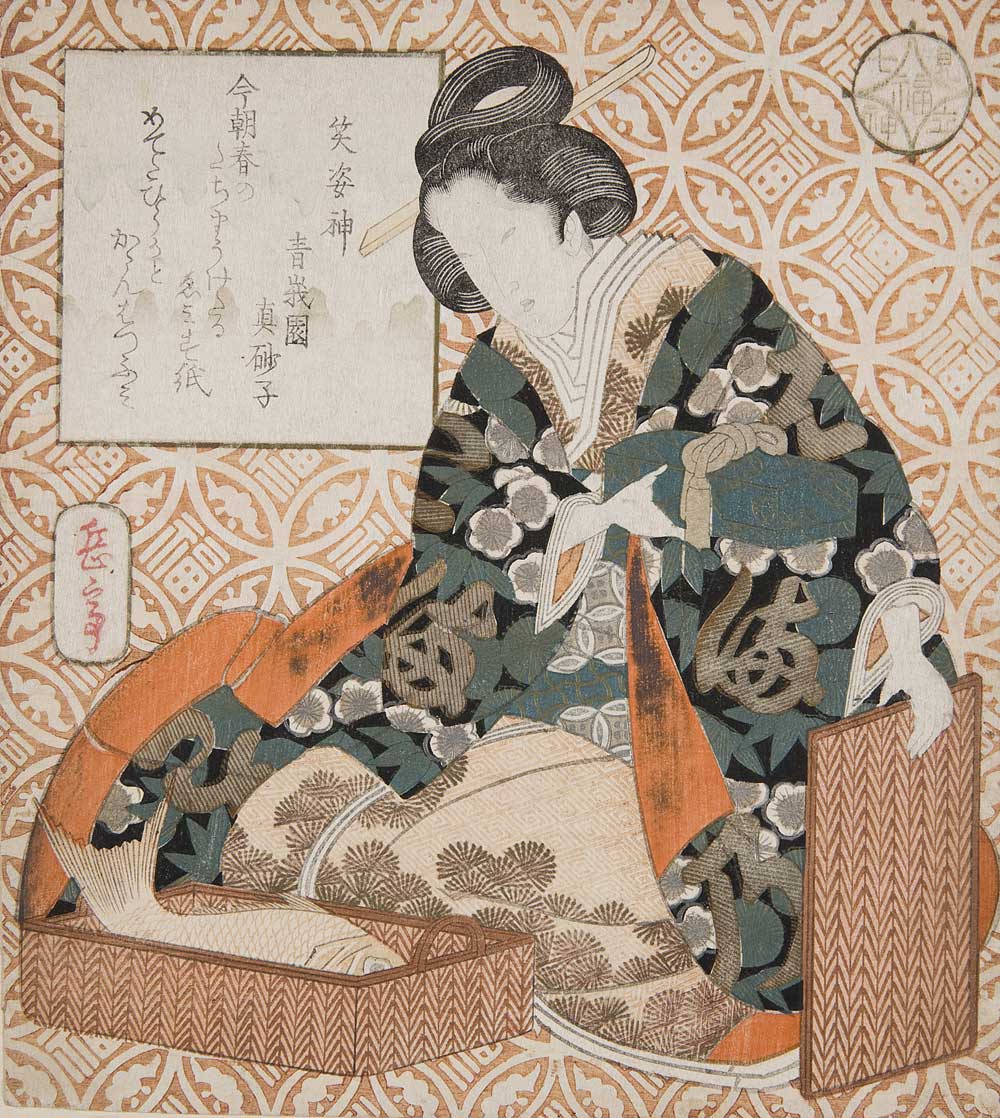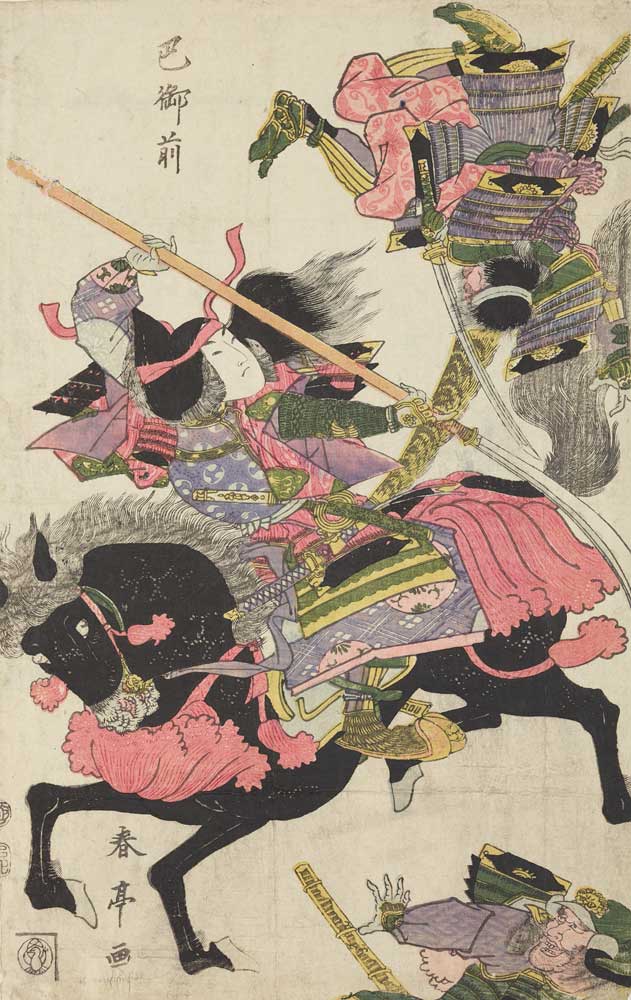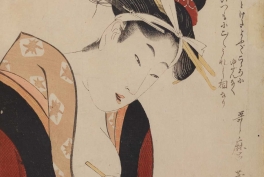Kitagawa Utamaro (1753–1806) Woman Writing a Letter / Fumi o kaku onna
From the series: Five Physiognomies of Beauties / Bijin go mensō
Ca. 1803–1804
Nishiki-e – polychrome woodblock print on paper
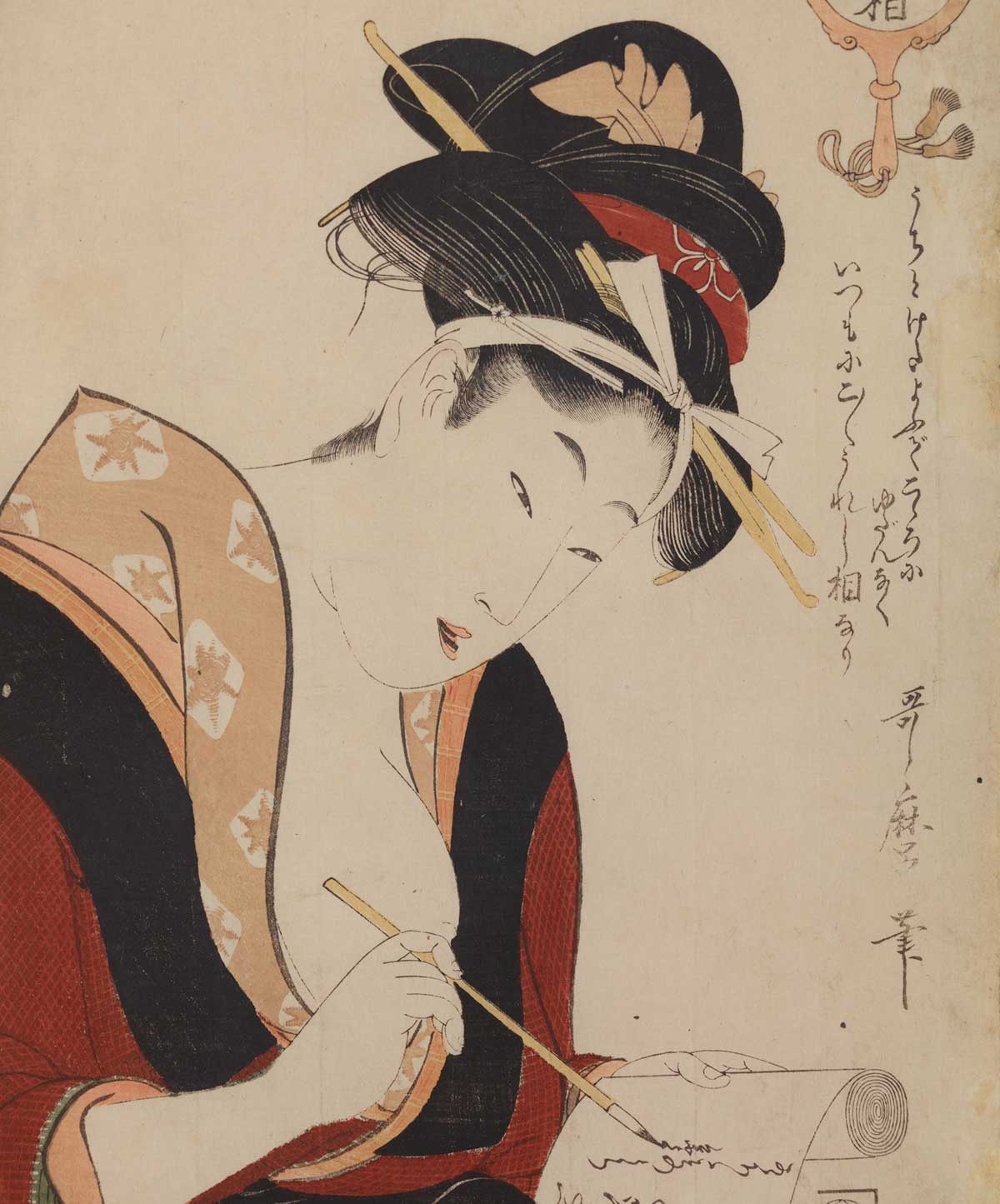
Kitagawa Utamaro (1753–1806) Woman Breastfeeding Her Child
From the series: Views of Famous Places: Twelve Types of Beautiful Women / Meisho fūkei bijin jūni sō 1801–1804 Nishiki-e – polychrome print on paper
![Images of Women in Japanese Painting and Woodblock prints]()
Utagawa Kuniyoshi (1797–1861) Tsumago – 43rd Station. Apparition of the Fox-Woman Kuzunoha
From the series: The Sixty-nine Post Stations of the Kisokaidō Road
1852
Nishiki-e – polychrome print on paper
![Images of Women in Japanese Painting and Woodblock prints]()
Katsukawa Shunchō (active ca. 1780–1795) Group of Women with a Cat at the Entrance to a House
Ca. 1785
Nishiki-e – polychrome woodblock print on paper
![Images of Women in Japanese Painting and Woodblock prints]()
Kitagawa Utamaro (1753–1806) Woman with a Boy Wearing a Mask – Parody of the Parable of Tao Yuanming / Tao Yuanming
From the series: The Three Laughers of Tiger Ravine – Allusion to the Chinese Parable Kokei ni sanshō / Kokei ni sanshō Ca. 1802 Nishiki-e – polychrome print on paper
![Images of Women in Japanese Painting and Woodblock prints]()
Katsukawa Shunsen (ok. 1762–1830) The Actor Segawa Kikunojo III as a Woman in a Black Kimono
1781–1789
Nishiki-e – polychrome print on paper
![Images of Women in Japanese Painting and Woodblock prints]()
Yashima Gakutei (1786 [?] – 1868) Ebisu
From the series: A Parody of the Seven Gods of Fortune / Mitate shichifukujin
Ca. 1830
Nishiki-e – polychrome woodblock print on paper, surimono
![Images of Women in Japanese Painting and Woodblock prints]()
Katsukawa Shuntei (1770–1820) Tomoe Gozen Fighting a Knight
1809
Nishiki-e – polychrome print on paper
![Images of Women in Japanese Painting and Woodblock prints]()
Kitagawa Utamaro (1753–1806) Erotic scene: Two Lovers by a Screen
From the book: Embracing Komachi / Komachi biki, 1802
Nishiki-e – polychrome print on paper
![Images of Women in Japanese Painting and Woodblock prints]()
